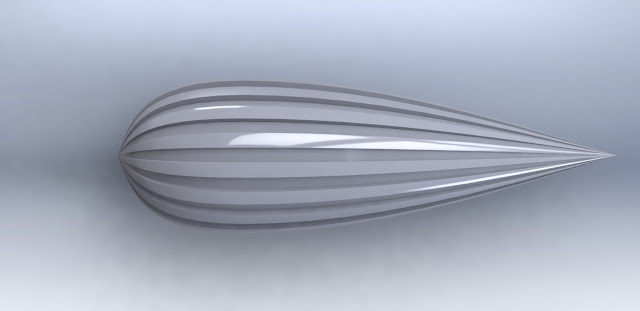A new thread was created in the F1 Technical Forum concerning grooved surfaces. A user asked whether grooved surfaces would be beneficial for channelling air around the car. But soon the question became whether grooved surfaces would reduce drag. The question concerns both longitudinal grooves and lateral grooves. So I decided to carry out a CFD test to answer the question. I tested a body with lateral grooves, longitudinal grooves and no grooves at all.
The body has a teardrop shape, it is 320 mm long and 100 mm thick on its thickest part. I tested it at 42 m/s and found the drag produced by each body.
Ungrooved body:
Drag: 0.27 N
Longitutinal Grooves:
Drag: 0.95 N
The longitudinal grooves reduce the thickening of the boundary layer. Also because of the increased surface area the body produces much more drag.
Lateral Grooves:
Drag: 3.68 N
The drag increased too much here partly because of the grooved shape of the front of the body.
Lateral Grooves V2:
Drag: 2.57 N
I smoothed out the front of the body that created a lot of drag, but still the drag figure for the body with lateral grooves is too high.















Great Job
ReplyDeleteWhat do you use for those?
ReplyDeleteSolidworks
DeleteSolidworks
Deletehow can i find the solidwork file for the first design ??
DeleteI am very enjoyed for this blog. Its an informative topic. It help me very much to solve some problems. Its opportunity are so fantastic and working style so speedy. เครื่องเชื่อมhdpe
ReplyDeleteGrrateful for sharing this
ReplyDeleteCan I Know why you choose this chape
ReplyDeleteWhat is the impact of golf ball like dimples?
ReplyDeleteThanks and that i have a dandy present: Where To Learn Home Renovation home renovations near me
ReplyDelete